5-Step Sales Process with Flowchart [Get Results Faster]
Discover a 5-step sales process that boosts revenue and helps your team close deals faster with a clear structure they can easily follow at every stage.
Author: Aasritha Sai
Discover a 5-step sales process that boosts revenue and helps your team close deals faster with a clear structure they can easily follow at every stage.
Author: Aasritha Sai

Sales success doesn’t happen by accident. It comes from having a clear process that guides your team through every step of the journey from finding leads to closing deals. But many businesses struggle because their sales process is unclear or doesn’t exist at all. This often leads to lost opportunities and wasted time. In fact, nearly 88% of salespeople unexpected situations that their sales process doesn’t cover. This shows how missing steps can lead to lost deals.
At the same time, companies that follow a clear sales process grow their revenue up to 18% faster. In this blog, you’ll discover the 5 step sales process that drives results. You’ll see how each stage helps your team follow it easily and close deals faster.
Want to improve your sales and make it easier? Here’s a simple breakdown of the five key steps that guide your team from first contact to closing deals:
The five step sales process guides your team from the first contact to closing the deal. It covers five essential steps:
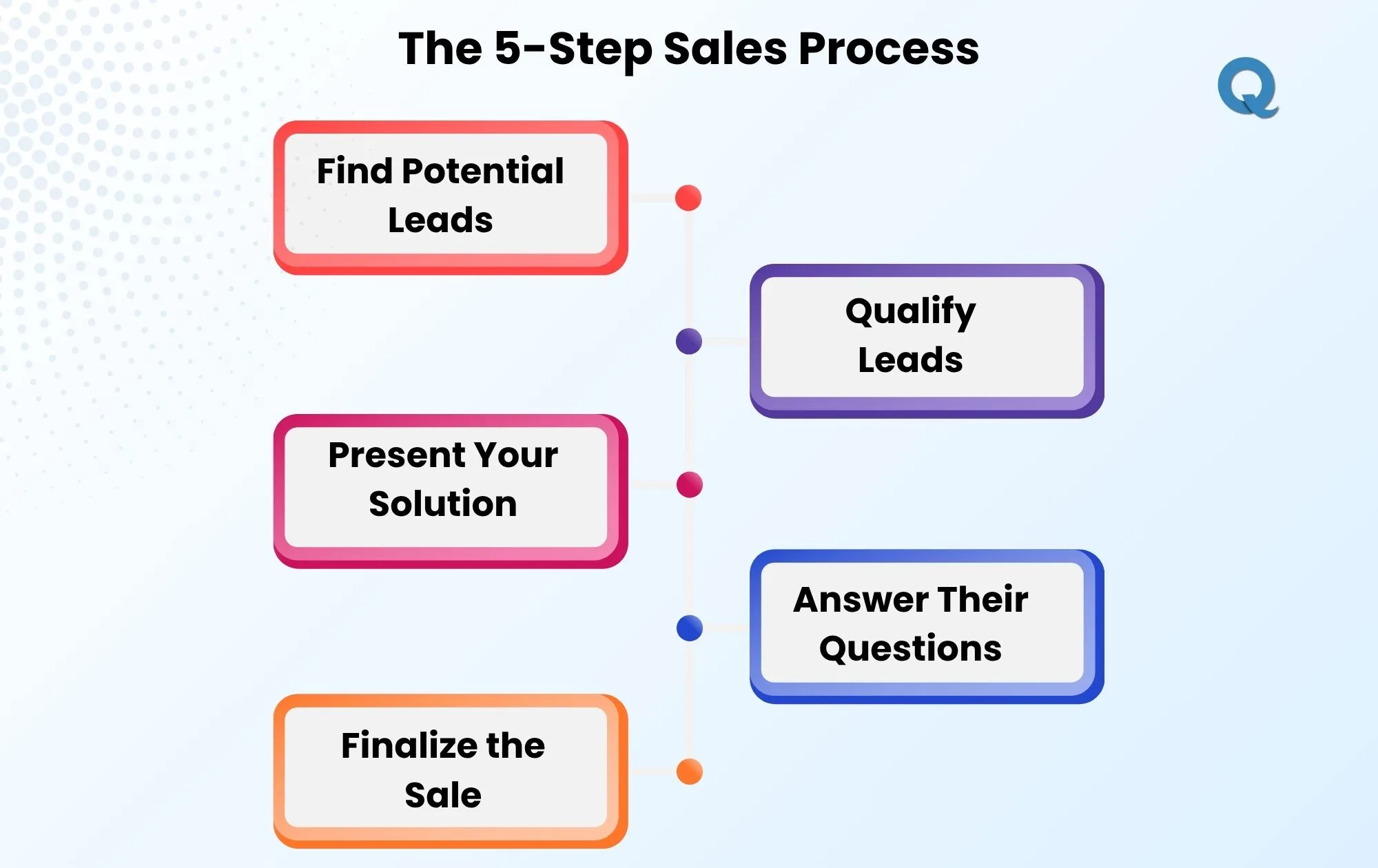
This approach keeps your process consistent, improves team communication, and makes sure every opportunity is handled carefully. Next, we’ll look at how to build a sales process that fits your team.
To build a sales process that actually works, start by looking at the challenges your team faces every day and the steps they go through to close deals. The goal is to create something clear and easy to follow using a step-by-step sales process so everyone knows exactly what to do at each stage.
Here’s what to pay attention to:
Following this approach will help you build a sales process that keeps your team focused, efficient, and closing more deals.
The first step in the selling process is to find people who might really need what you offer. Instead of reaching out to everyone, focus on those who fit your ideal customer. This helps your team spend time on leads that have a better chance of becoming customers.
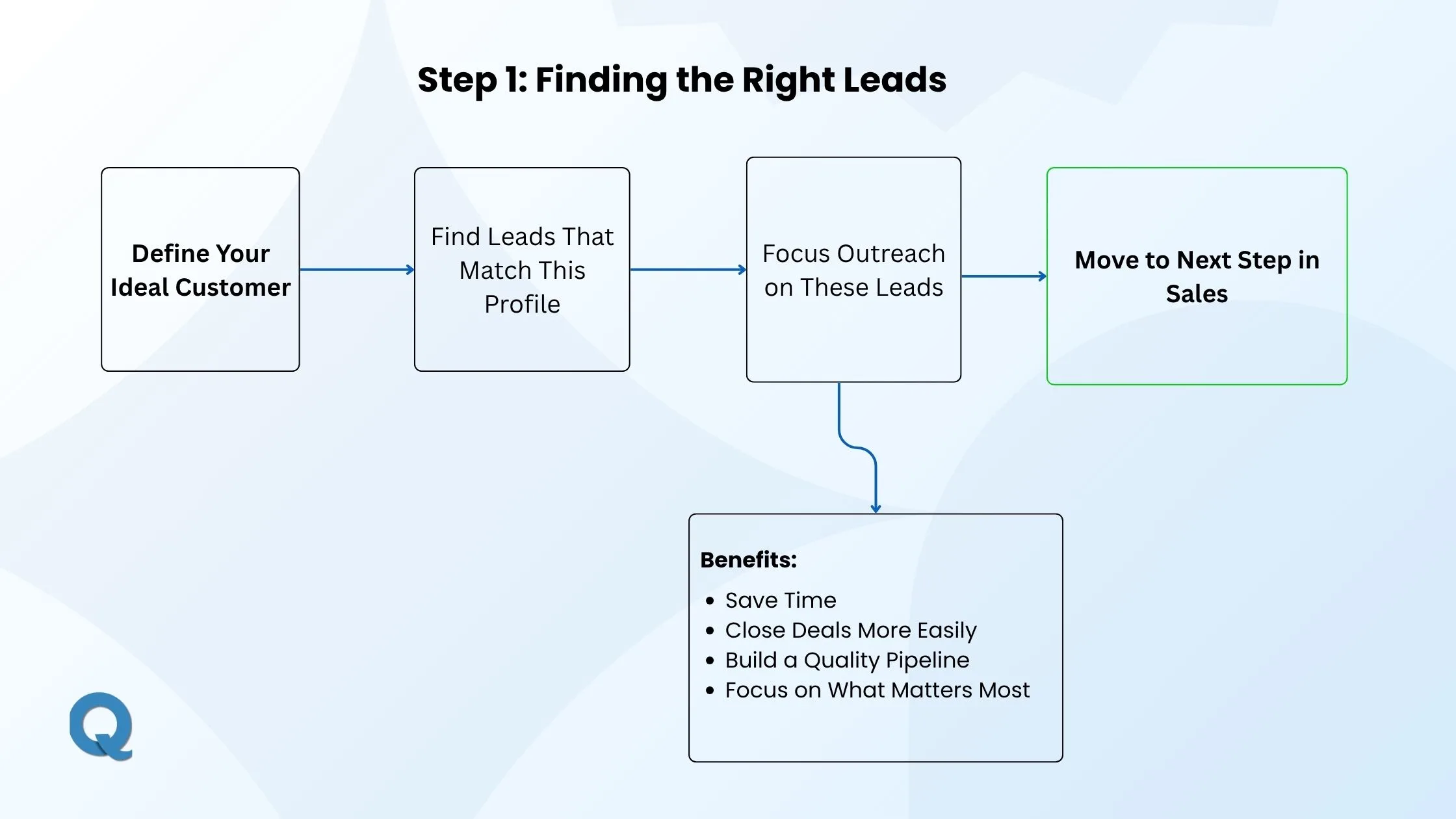
Here are some important benefits of focusing on the right leads:
When finding leads, avoid these mistakes:
After finding potential leads, the next step is making sure they are a good fit for your product or service. This helps focus time on leads who are more likely to become customers. Taking this step seriously makes your sales process more efficient and effective.
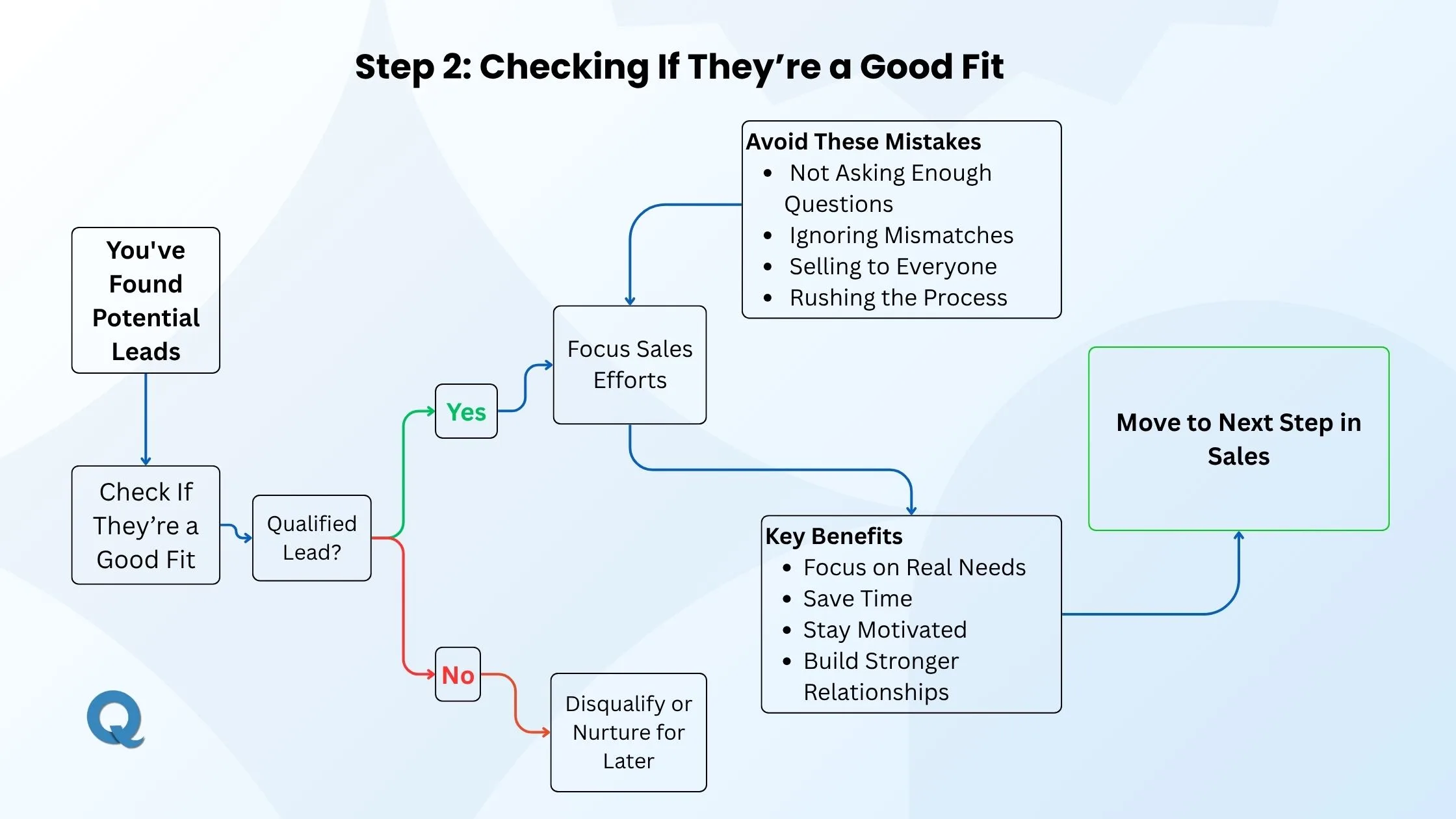
Here are some important advantages of checking if a lead is a good fit:
Watch out for these common errors that can slow down your sales progress:
Sometimes it’s hard to keep track of every sales call, and missing details can slow down your sales process. That’s where Qoli.ai helps. It automatically records your calls and keeps your calls organized, so you don’t have to worry about losing important information. With Qoli.ai, your team can easily review calls and focus on closing deals faster without extra work.
How you present your offer is a key part of a sales strategy that helps you connect with customers and show how your product or service solves their problems. Clear and honest communication builds trust and keeps the buyer interested throughout the process.
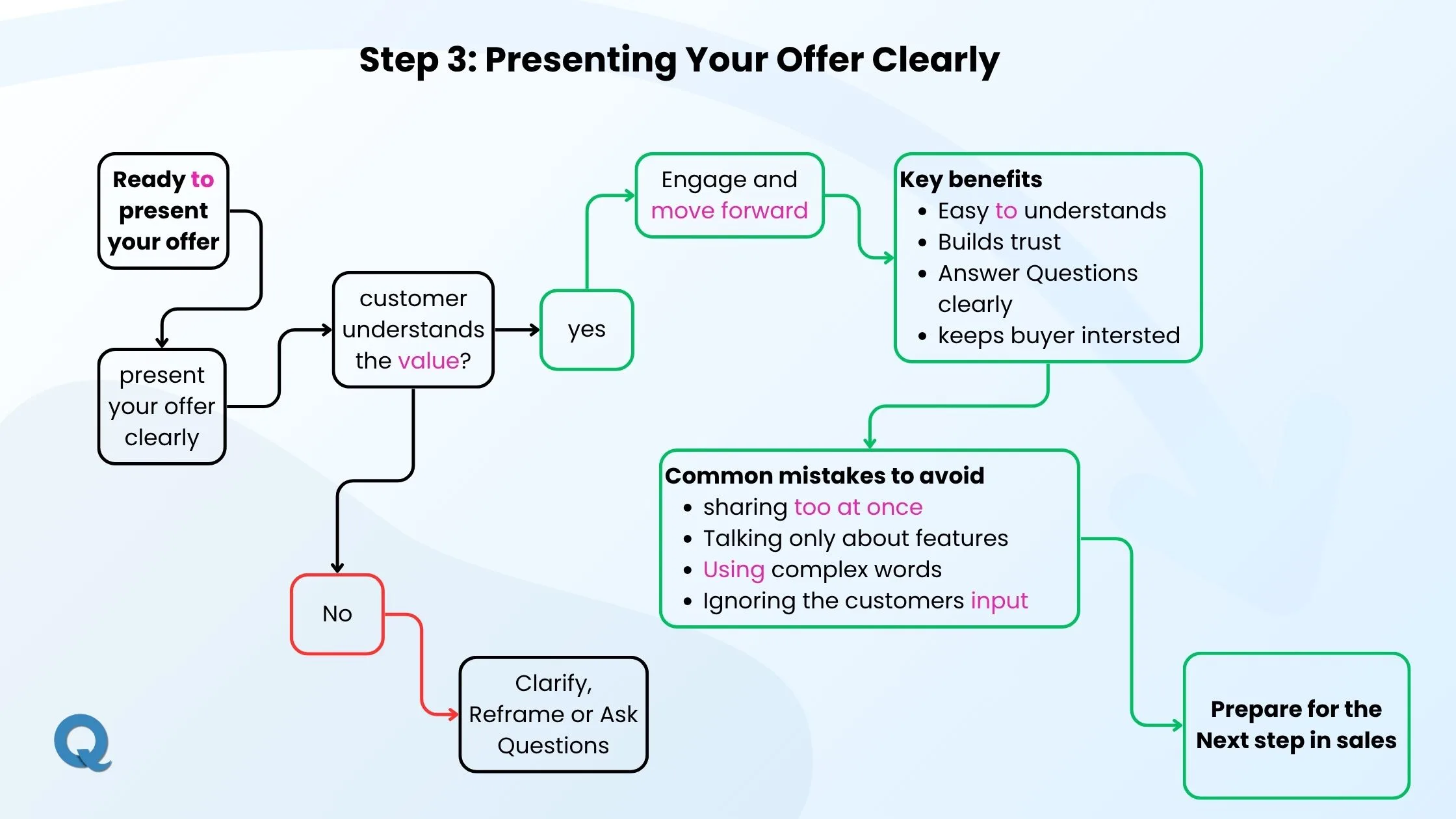
This step is all about making sure your potential customer feels confident and clear about your offer. When you handle their questions well as part of your sales engagement process, you reduce hesitation and build trust, which brings the sale closer to closing.
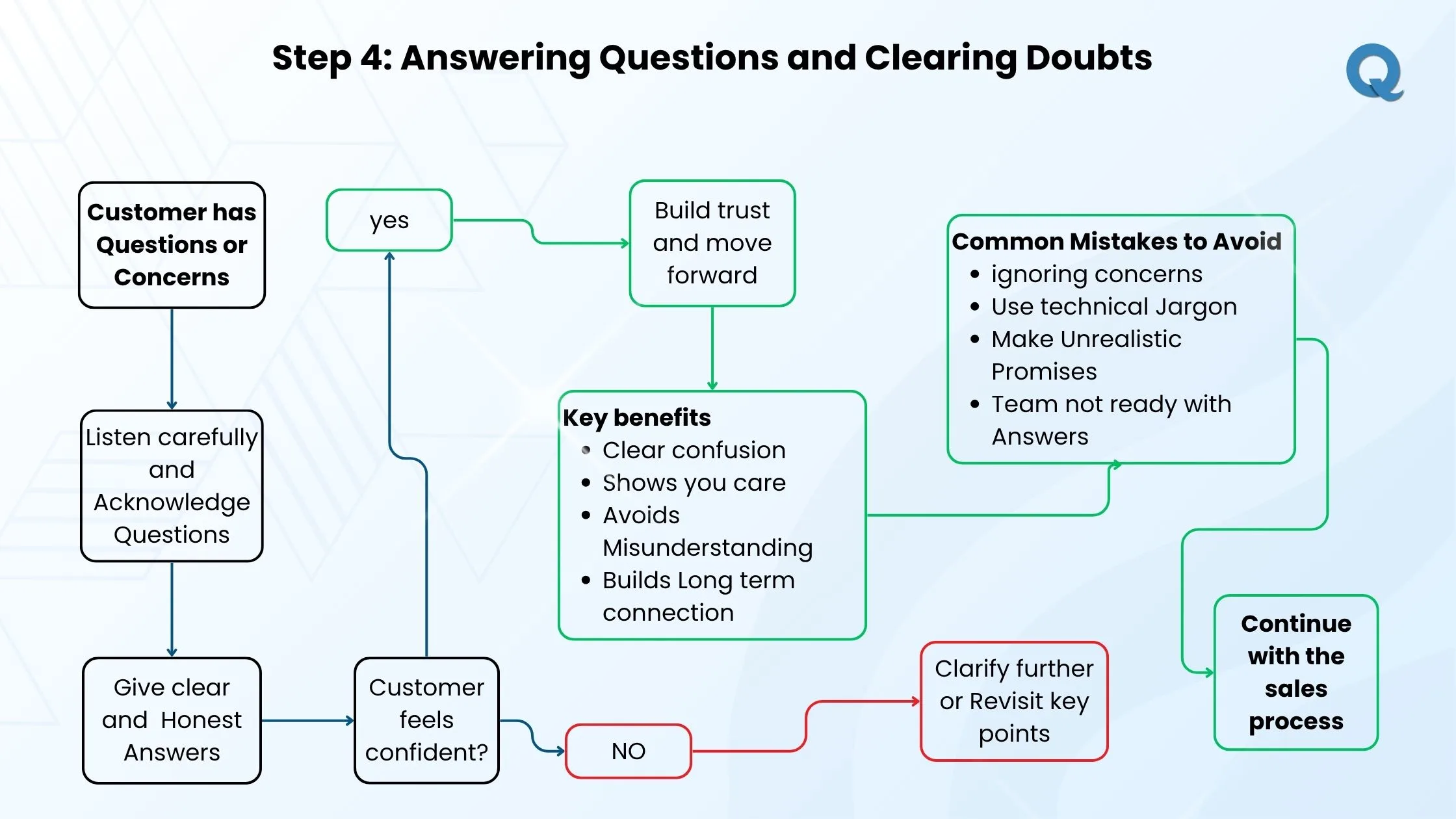
Here’s what answering questions properly does for your sales process:
This final step is where you seal the agreement and focus on the key sales point that convinces the customer to commit. Closing well means making sure the customer feels confident and ready to move forward, while also preparing for smooth next steps.
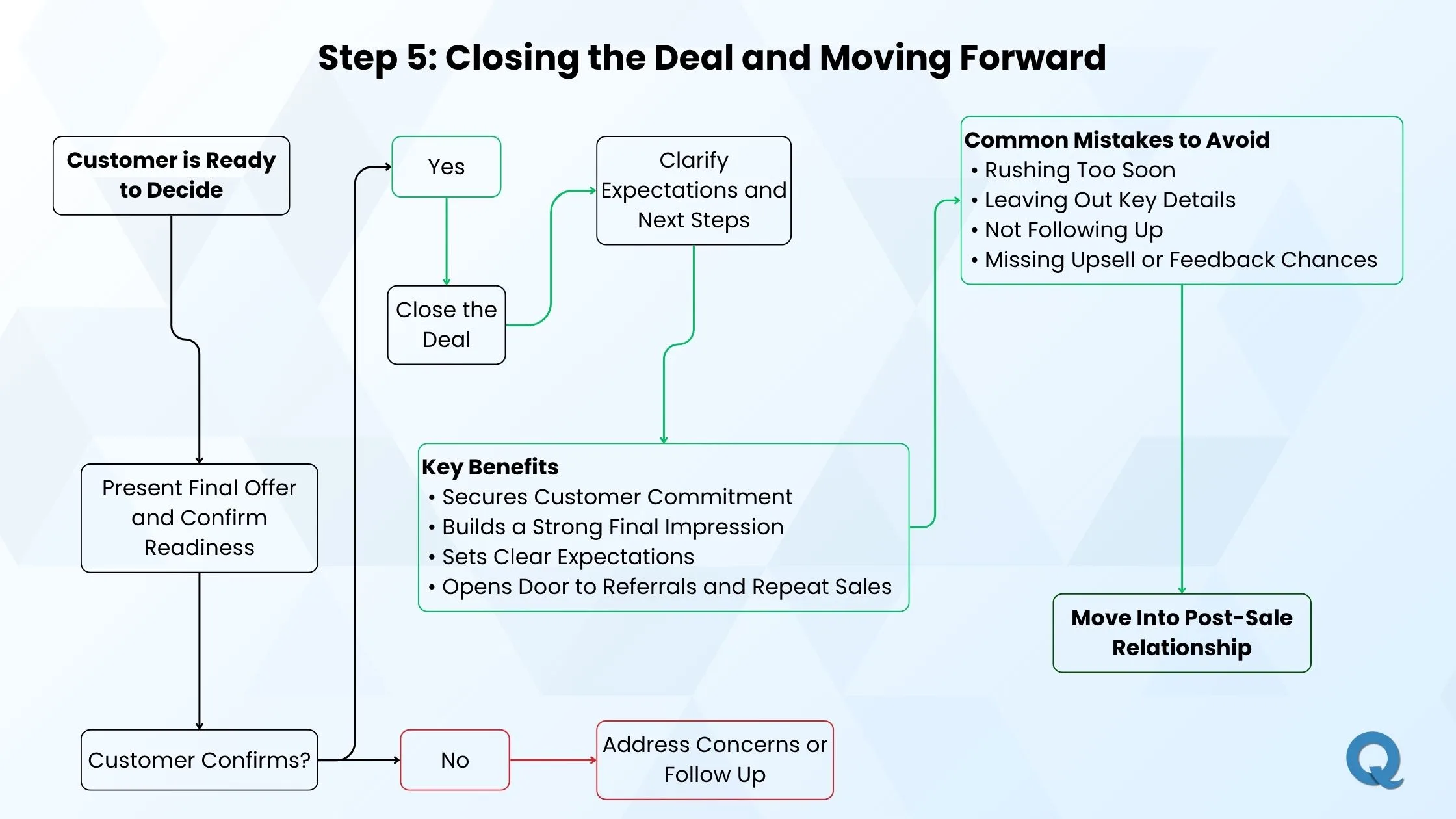
Successfully closing the deal brings clear advantages to your sales process:

You can measure your sales process by tracking how many leads turn into sales, how long each stage takes, and where deals are getting stuck. These simple checks help you spot weak areas and improve how your team sells.
To know if your sales process is working, you need to track the right numbers. These key metrics help you understand how effective your software sales process or overall strategy really is.
Last chance! Get 30% off all Qoli features before this limited-time deal disappears forever.
A strong sales process is more than just steps on a list. It is what helps your team stay focused, work with clarity, and close deals faster. When each stage is clear, your team knows what to do, and your customers feel more confident saying yes. Use this five-step process as your starting point. Keep checking what works, fix what does not, and keep improving until your sales system runs smoothly every time.